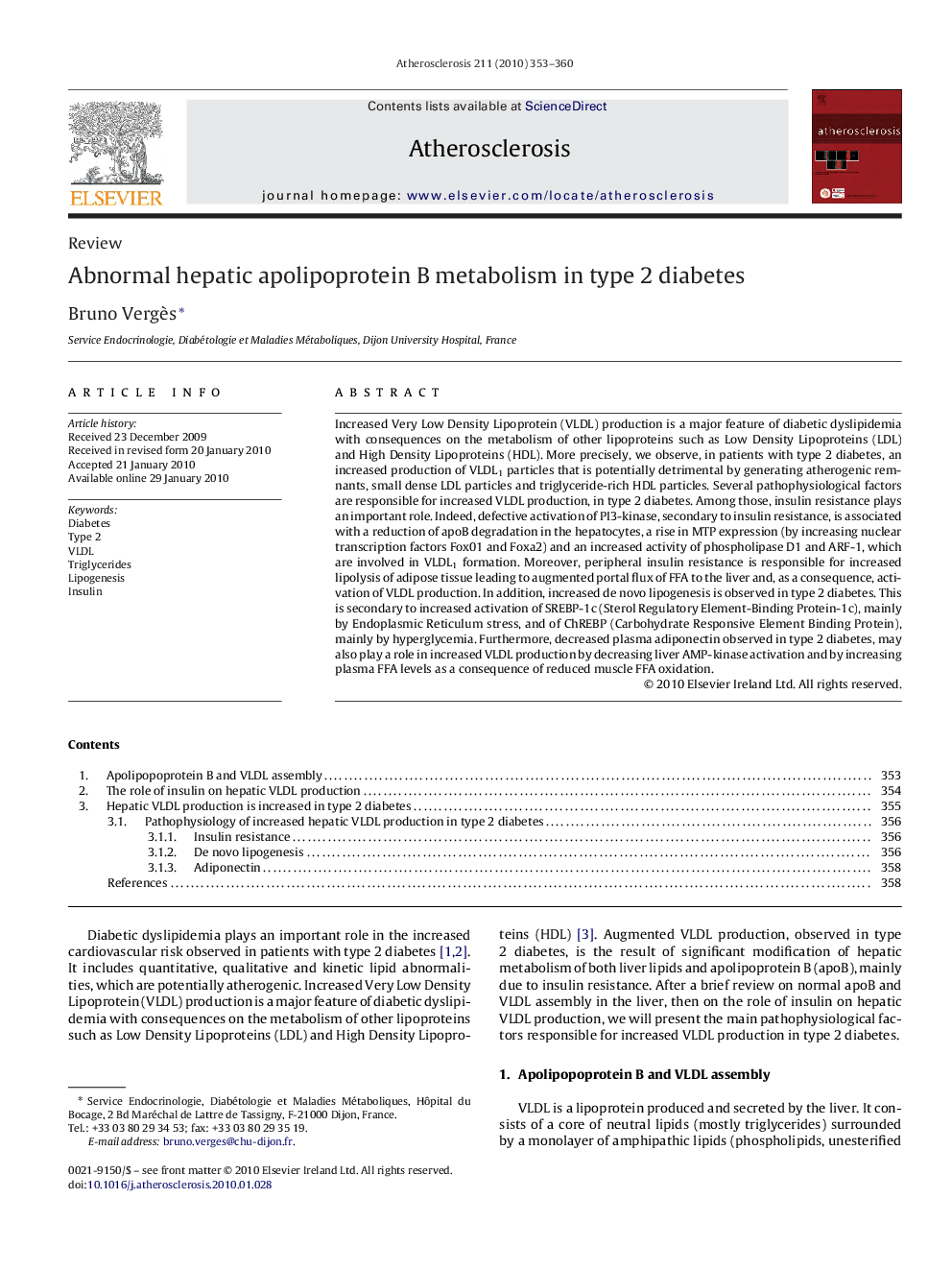| Article ID | Journal | Published Year | Pages | File Type |
|---|---|---|---|---|
| 2893081 | Atherosclerosis | 2010 | 8 Pages |
Increased Very Low Density Lipoprotein (VLDL) production is a major feature of diabetic dyslipidemia with consequences on the metabolism of other lipoproteins such as Low Density Lipoproteins (LDL) and High Density Lipoproteins (HDL). More precisely, we observe, in patients with type 2 diabetes, an increased production of VLDL1 particles that is potentially detrimental by generating atherogenic remnants, small dense LDL particles and triglyceride-rich HDL particles. Several pathophysiological factors are responsible for increased VLDL production, in type 2 diabetes. Among those, insulin resistance plays an important role. Indeed, defective activation of PI3-kinase, secondary to insulin resistance, is associated with a reduction of apoB degradation in the hepatocytes, a rise in MTP expression (by increasing nuclear transcription factors Fox01 and Foxa2) and an increased activity of phospholipase D1 and ARF-1, which are involved in VLDL1 formation. Moreover, peripheral insulin resistance is responsible for increased lipolysis of adipose tissue leading to augmented portal flux of FFA to the liver and, as a consequence, activation of VLDL production. In addition, increased de novo lipogenesis is observed in type 2 diabetes. This is secondary to increased activation of SREBP-1c (Sterol Regulatory Element-Binding Protein-1c), mainly by Endoplasmic Reticulum stress, and of ChREBP (Carbohydrate Responsive Element Binding Protein), mainly by hyperglycemia. Furthermore, decreased plasma adiponectin observed in type 2 diabetes, may also play a role in increased VLDL production by decreasing liver AMP-kinase activation and by increasing plasma FFA levels as a consequence of reduced muscle FFA oxidation.
